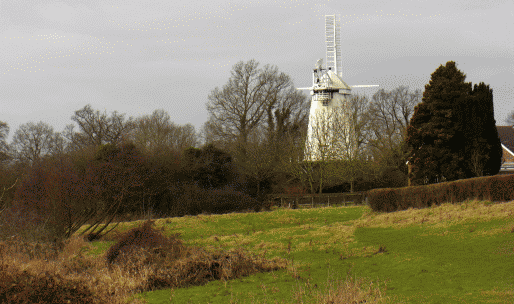But all is not as it seems.Two thousand years ago and further back in time, experts believe areas such as this were heavily farmed and probably hosted populations of native Britons.The secrets lie beneath the tree trunks and ferns, so some fairly sophisticated technology was needed to map a wide area.Archaeologists have turned to an airborne laser scan a technique traditionally used by engineers to survey for roads and pylons to get the answers they need. A plane flew over the South Downs and used a laser that could penetrate beneath the tree canopy. This created a 3D map showing all the lumps and bumps under the forest. The same technology was recently used to uncover the remains of a huge city at Angkor Wat in Cambodia. The large area being investigated stretches from the A3 at Waterlooville and across to the River Arun at Arundel in West Sussex. The result of the laser scan produced a 3D model which reveals an intricate field system across the landscape a sight to behold for any archaeologist worth their salt.This map is now being used as a basis for experts and volunteers to go out and explore these topographical features.
I join one group at Queen Elizabeth Country Park as they carry out more research. I meet the enthusiastic Dr Rebecca Bennett, who manages the project for the South Downs National Park Authority. She explains:
‘Although the laser survey gives us lots of new information about the ground surface below the trees, it’s not intelligent. It doesn’t tell us what those features are. So bringing volunteers out on the ground is really important to our understanding.’
This is the second year of the three-year project, which is funded by a £661,800 grant from the Heritage Lottery Fund. At the moment teams are concentrating on fieldwork to look for any signs of human interaction with the landscape.
Dr Bennett spreads out a huge map on a picnic table that shows a lattice of lines across the downs – evidence of agriculture. Many of the lines are lynchets banks of earth that build up at the edge of a field ploughed over a long period of time. I am shown one of these lynchets, which is now crossed by a footpath used by walkers. To an untrained eye you would walk over it without blinking an eyelid, but the significance of this jigsaw of fields cannot be underestimated. ‘It’s outstanding,’ says Dr Bennett, who is 30 and lives in Petersfield. We had a suspicion there was an awful lot more than we already knew. But when we got the results we were really astonished there’s a heck of a lot going on here. The quantity of information we have collected is unprecedented for this area. That’s why we need two years and all these people helping us.This is giving us a completely different perspective on this landscape through the application of new digital technology. It’s quite hard for people to envisage this area as anything other than woodland. But we can show this land was used very differently.’
One question that springs to mind is why would people want to farm up on the downs? Dr Bennett explains: ‘It looks like much of this landscape was previously open farmland around the turn of BC to AD. For the most part, it’s been heavily used for agriculture.We were at a slight climatic optimum. Areas that were high up that we wouldn’t consider to be suitable for farmland today were suitable in those days. A good example is the Dartmoor Reaves within Dartmoor National Park – a really extensive field system in areas of moorland that, even with modern farming techniques, we can’t farm. We are talking about the late prehistoric/Roman period and we had higher populations than we had ever had in this country since the last Ice Age. So there was a boom in population and societal structure. It was basically exploitation of a resource. The Romans didn’t come here for the women or the weather they came here because there were resources. Here the agricultural land was valuable to them and creating an agricultural economy. We know that grain for the troops was really important, but we can’t be certain they were doing that here.’
The project is not restricted to ancient times. ‘In this area there’s lots of evidence of military activity, such as practice trenches,’ says Dr Bennett.‘We go right the way through from field systems in prehistoric times, to Bronze Age barrows, right through to evidence of military activity in World War One and Two.’
Dr Bennett believes that the farming people lived on the downs, but where they lived is still an unanswered question. What is clear is they were the ordinary folk and not Roman nobles or aristocrats who lived in more glamorous locations like Fishbourne Roman Palace near the coast.
Dr Bennett explains that the name ‘high woods’ was in fact derived from a poem by Sussex poet Hilaire Belloc, who extolled the joys of walking in the downland countryside ‘in the high woods’ [my emphasis].
Rather than digging for clues as one normally imagines archaeology, this project hopes to shed light on our history from the surface. What’s exciting is it’s an unwritten book – currently with sketchy details – that may one day be a compendium of information about the history of the South Downs. And who knows what they might find if they do dig down beneath the surface?
‘It’s a different perspective,’ adds Dr Bennett. ‘And actually this is how most archaeology projects start – with a broader landscape view.''
Re-printed from The Portsmouth News: 'Unlocking the secrets of the high woods' (22nd January 2015).
To learn more about the 'Secrets of the High Woods' project click here.


